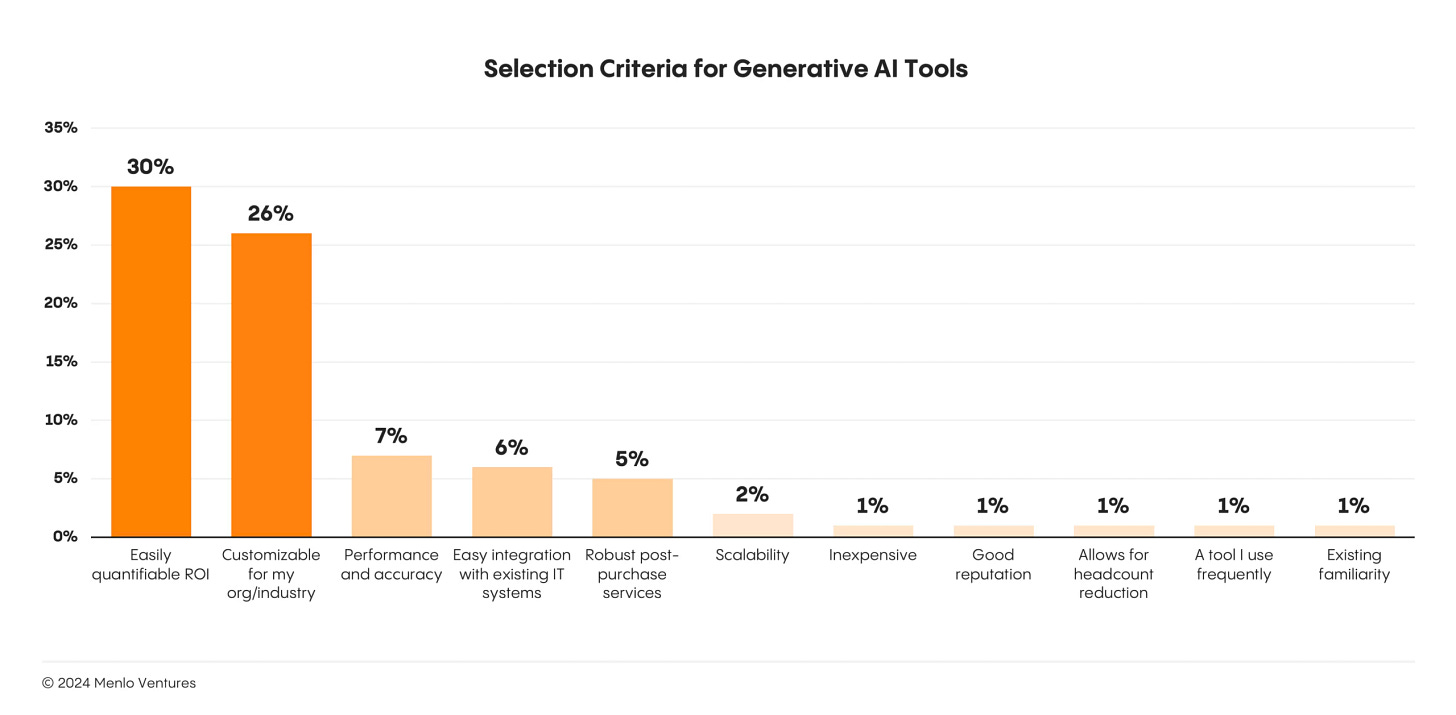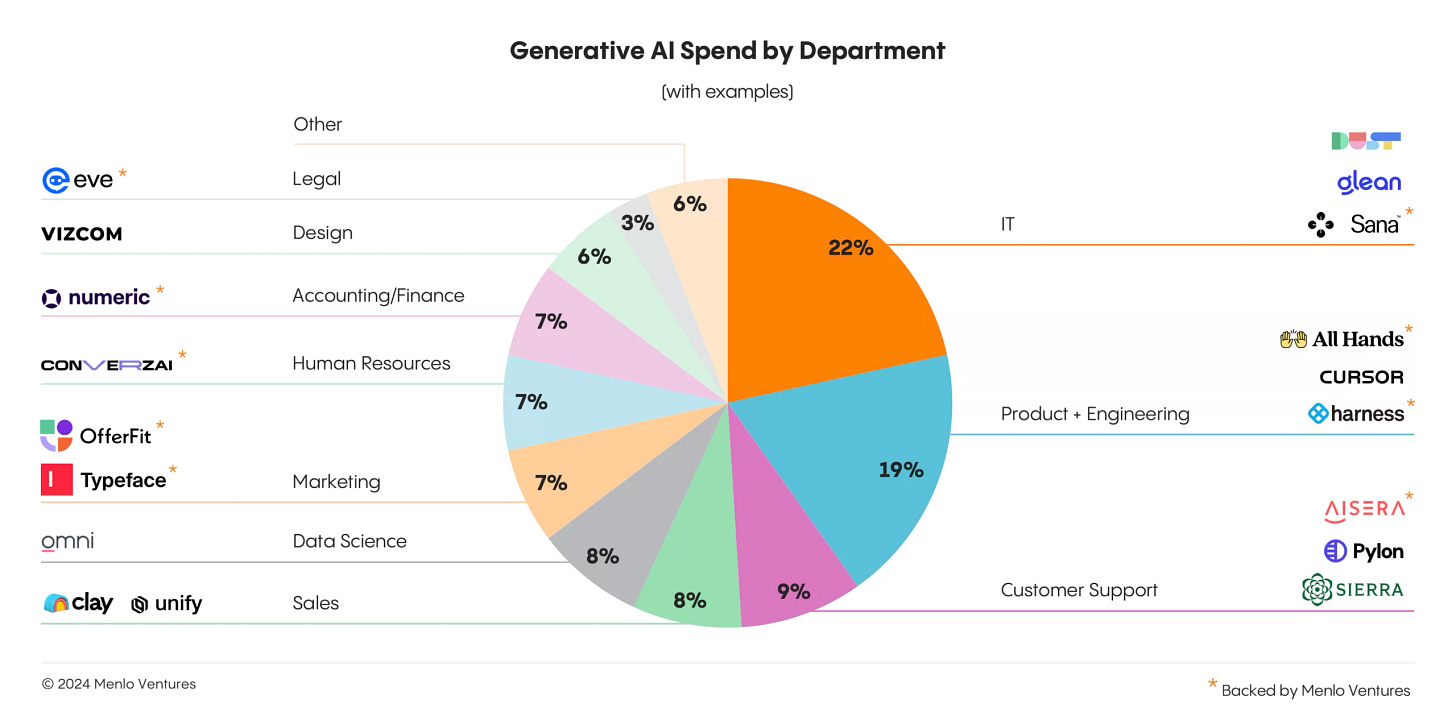The state of Gen AI in Enterprises: Playing safe, Spending 6X [Report]
$4.6 billion was spent in Enterprise Gen AI apps in 2024
In 2024, enterprises have significantly increased their investment in generative AI, with spending surging to $13.8 billion—more than six times the $2.3 billion spent in 2023. This shift indicates a move from experimental phases to integrating AI into core business strategies.
[Audiobook of the day: AI Snake Oil Audiobook]
A survey of 600 enterprise IT decision-makers revealed that 72% anticipate broader adoption of generative AI tools in the near future. However, over a third lack a clear vision for implementation, highlighting the early stages of this transformation.
Notably, 60% of AI investments come from innovation budgets, while 40% are sourced from more permanent allocations, with 58% of that redirected from existing budgets. This trend underscores a growing commitment to AI integration.
Spending on generative AI applications has risen to $4.6 billion in 2024, an almost eightfold increase from the previous year.
The report emphasizes the importance of the application layer, where companies are leveraging large language models (LLMs) to optimize workflows across various sectors. As design patterns at the infrastructure level become more established, the application layer is experiencing rapid growth, presenting opportunities for startups and innovation.
Where is the money going?
Enterprises are focusing on use cases that provide immediate ROI, like customer support and automation.
Many applications target workflow optimization, freeing employees to focus on high-value tasks.
There’s growing interest in creative and strategic applications, such as marketing and R&D.
This demonstrates a shift toward embedding generative AI into the core operational and strategic processes of businesses.
Key Use Cases for Generative AI in Enterprises
How are Enterprises selecting Gen AI vendors?
Often, organizations discover too late that they’ve underestimated the importance of technical integration, ongoing support, and scalability.
Data privacy hurdles (21%) and disappointing return on investment (ROI) (18%) also throw pilots off course.
Technical issues, especially around hallucinations (15%), round out the top reasons for failure.
Which department is buying GenAI apps?
Read the report.




